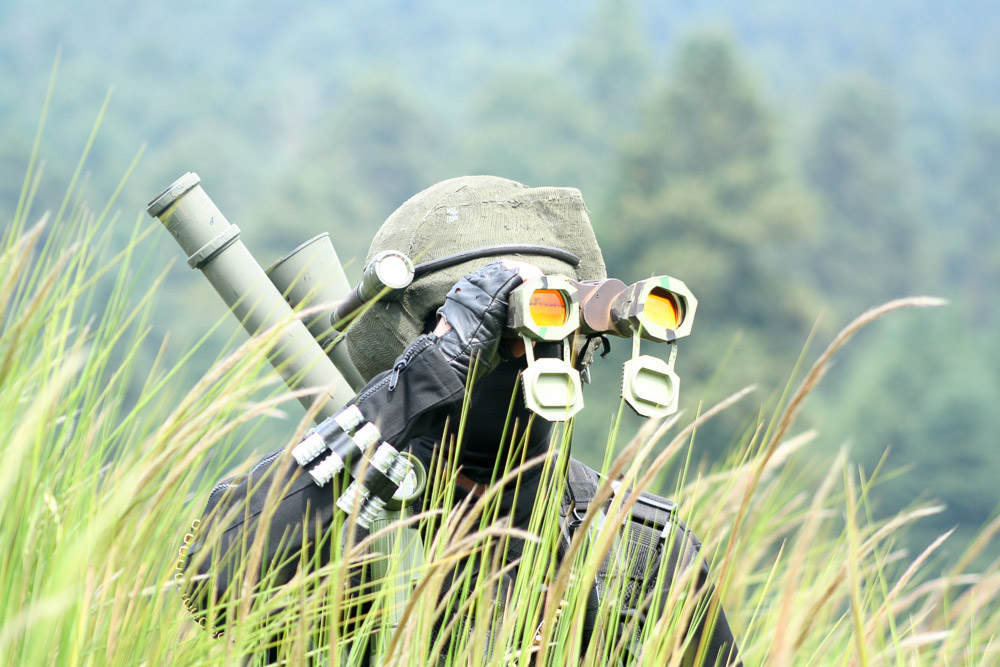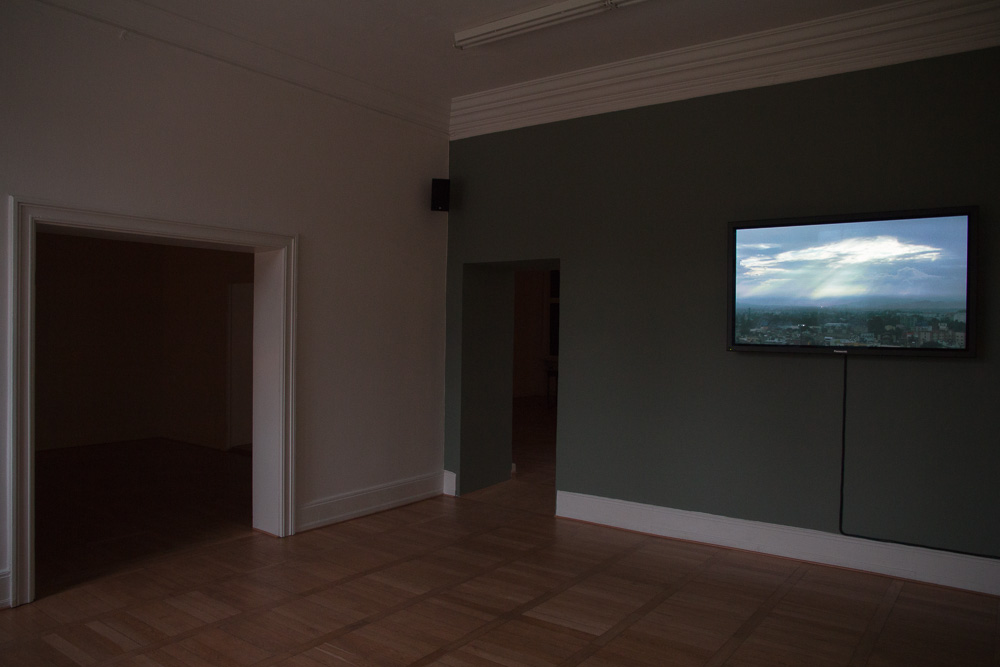HD Video for installation, 4 min. (loop), 2009
Synopsis:
HECHO EN MEXICO was realized in Mexico City during a one month residency in summer 2009 and is a reaction on the visible and invisible change, caused by the escalating drug war and militarization of the country. A heavily over armed horseman cruises through a green mountain landscape outside of Mexico City. His appearance references a number of common images of cinematic warriors in their moment before the final battle begins. The appropriated heroic music turns the sequence almost into a propagandistic recruiting advertisement. But the hero’s role is unclear: Is he the hunter or the hunted? The contemporary armor and weaponry on the back of a traditional horse of a charro is in reality unseen and a contradiction itself. It’s a familiar fictional topic as the abandoned buildings and streets of Mexico City in the second sequence of the 4 min. video loop.
Video Stills:
- HECHO EN MEXICO, HD Video for installation, 4 min. (loop), 2009, Video Still
- HECHO EN MEXICO, HD Video for installation, 4 min. (loop), 2009, Video Still
- HECHO EN MEXICO, HD Video for installation, 4 min. (loop), 2009, Video Still
- HECHO EN MEXICO, HD Video for installation, 4 min. (loop), 2009, Video Still
- HECHO EN MEXICO, HD Video for installation, 4 min. (loop), 2009, Video Still
- HECHO EN MEXICO, HD Video for installation, 4 min. (loop), 2009, Video Still
- HECHO EN MEXICO, HD Video for installation, 4 min. (loop), 2009, Video Still
- HECHO EN MEXICO, HD Video for installation, 4 min. (loop), 2009, Video Still
- HECHO EN MEXICO, HD Video for installation, 4 min. (loop), 2009, Video Still
- HECHO EN MEXICO, HD Video for installation, 4 min. (loop), 2009, Video Still
- HECHO EN MEXICO, HD Video for installation, 4 min. (loop), 2009, Video Still
- HECHO EN MEXICO, HD Video for installation, 4 min. (loop), 2009, Video Still
Production Stills:
Installation View:
Production Team:
Directed, performed, edited and produced by: Bjørn Melhus
Camera: Marco Casado
Coordinator Mexico City: Kerstin Erdmann
Commissioned by Goethe Institut Mexico City
Additional Information:
In “Hecho en Mexico” (“Made in Mexico”), Melhus adapts the tradition of the charros. Clad entirely in black, riding a horse, and equipped with the latest weapons technology, he represents the aggressive armament of the country. While in the first half of the film he rides through a lonely landscape checking out the area through binoculars, the second half is dominiated by a distopian cityscape. Abondoned houses, empty streets and a dark, apocalyptic sky evoke danger, despite the fact that no people are to be seen. The ongoing drug war in Mexico has turned entire villages into ghost towns, a vision projected in “Hecho en Mexico” onto the country’s capital with its 25 million inhabitants. Underscored by a highly evocative sound track that creates suspense where nothing actually happens, the horseman presents himself as a representative of a paramilitary police state that suspects dangers at every turn. His costume and gestures recall modern action movies and their heroes who take the law into their own hands, yet also martial arts films with their emphasis on acrobatic battle. In “Hecho en Mexico”, however, the hero is dependent only on himself, and rides through the landscape like some modern Don Quixote.
(extract from: Vanessa Müller: “Bjørn Melhus at the Haus am Schluh Worpswede”, 2013, translation by John William Gabriel)














